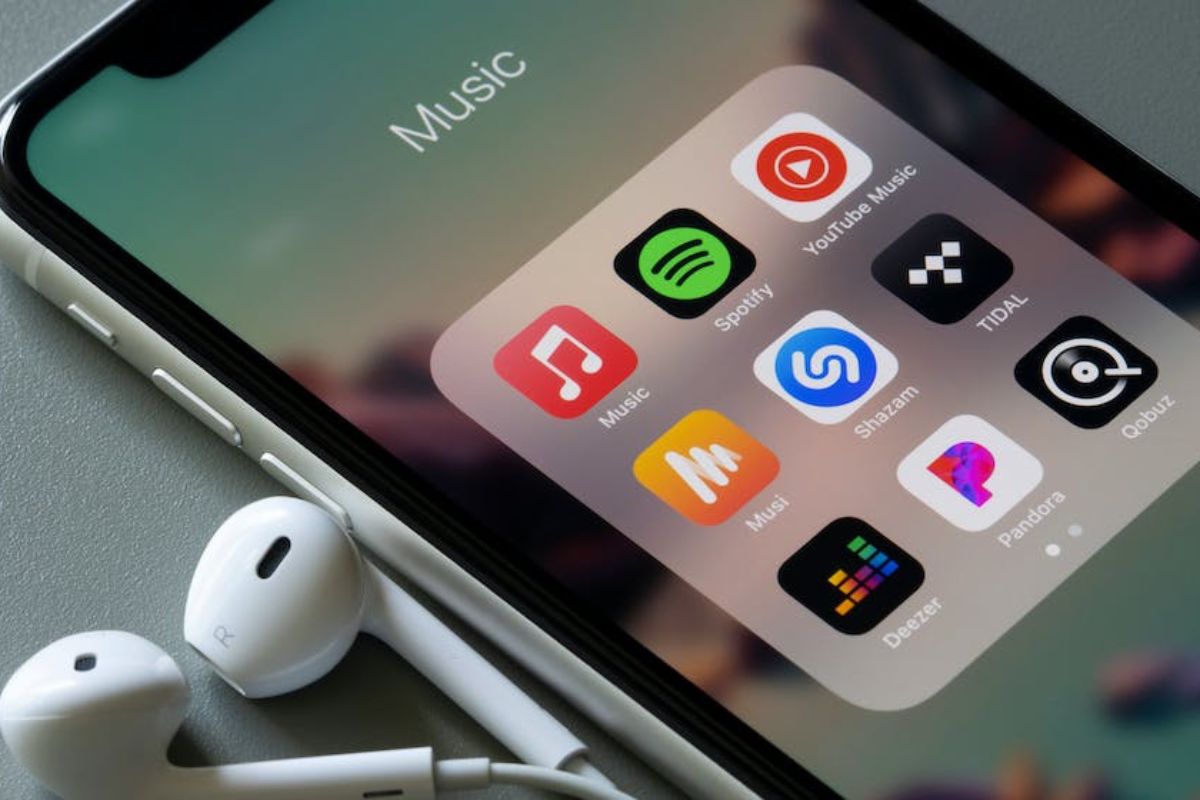Music Industry Trends: Exploring the Evolution of Music Streaming
The music industry has undergone a significant transformation with the rise of music streaming services. This shift in consumption habits has revolutionized how people access and listen to music, leading to various trends and changes in the industry.
One prominent trend is the exponential growth of music streaming subscriptions. Services like Spotify, Apple Music, and Amazon Music have amassed millions of subscribers worldwide, offering vast libraries of songs accessible anytime, anywhere.
Another trend is the decline of physical music sales, including CDs and vinyl records, as consumers increasingly opt for digital streaming platforms. This shift has prompted record labels and artists to adapt their marketing and distribution strategies to cater to the digital landscape.
Additionally, the emergence of personalized playlists and algorithm-driven recommendations has reshaped how listeners discover new music, with streaming platforms using data analytics to curate personalized listening experiences for users.
Furthermore, the global reach of music streaming has facilitated the internationalization of music markets, allowing artists from diverse backgrounds to reach a global audience and fostering cross-cultural collaborations.
However, challenges such as fair compensation for artists, concerns over royalty rates, and the sustainability of the streaming model persist, prompting ongoing debates within the industry.
In conclusion, the evolution of music streaming has had a profound impact on the music industry, reshaping consumption habits, revenue models, and distribution channels. As technology continues to advance and consumer preferences evolve, the music industry will continue to adapt to the changing landscape of digital music consumption.
Music industry trends.

Music industry trends encompass various shifts and developments shaping the landscape of the music business. Some prominent trends include:
Rise of Streaming:
Streaming services like Spotify, Apple Music, and Amazon Music have become dominant platforms for music consumption, surpassing physical sales and digital downloads. This trend has led to changes in revenue models and distribution strategies.
Personalized Recommendations:
Streaming platforms utilize algorithms to offer personalized playlists and recommendations, enhancing user experience and influencing music discovery.
Globalization:
The internet and streaming services have facilitated the globalization of music, allowing artists from diverse backgrounds to reach international audiences and collaborate across borders.
Live Streaming Concerts:
With the onset of the COVID-19 pandemic, live streaming concerts and virtual events have gained popularity as artists seek alternative ways to connect with fans and generate revenue.
Artist Empowerment:
Independent artists are leveraging social media, digital distribution platforms, and crowdfunding to bypass traditional record labels, retain creative control, and build direct relationships with fans.
NFTs and Blockchain Technology:
Non-fungible tokens (NFTs) and blockchain technology are being explored as new avenues for artists to monetize their work, create digital collectibles, and engage with fans.
Sustainability and Social Impact:
There is a growing emphasis on sustainability and social impact within the music industry, with artists and organizations advocating for environmental initiatives, social justice causes, and fair compensation for creators.
These trends reflect the evolving nature of the music industry in response to technological advancements, changing consumer behavior, and broader socio-cultural shifts. As the industry continues to adapt, new trends and innovations will undoubtedly emerge, shaping the future of music production, distribution, and consumption.
How Does Music Streaming Work?

Music streaming works by delivering audio content over the internet in real-time to users’ devices, such as smartphones, computers, or smart speakers. Users access a vast library of songs hosted on streaming platforms like Spotify or Apple Music through their subscription.
When a user selects a song, the streaming platform retrieves the audio data from its servers and sends it to the user’s device, where it is decoded and played back in real-time.
Streaming platforms utilize algorithms to personalize recommendations and playlists based on user preferences, enhancing the user experience and facilitating music discovery.
History of the Music Streaming Marek.

The music streaming market has evolved significantly over the past two decades. It began in the early 2000s with the launch of services like Pandora and Last.fm, which offered personalized radio stations based on use
preferences. In 2008, Spotify introduced the concept of on-demand streaming, allowing users to choose specific songs and albums to listen to. Since then, the market has grown rapidly, with the emergence of platforms like Apple Music, Amazon Music, and Tidal. Today, music streaming is the dominant method of music consumption, surpassing physical sales and digital downloads, and continues to innovate with features like personalized playlists and high-fidelity audio.
Streaming as an Answer to Piracy:
Streaming services emerged as a response to rampant music piracy in the early 2000s. By providing convenient,
legal access to vast catalogs of music at affordable prices, streaming platforms offered a compelling alternative to

illegal downloading and file-sharing. With user-friendly interfaces and comprehensive libraries, services like Spotify and Apple Music made it easier for consumers to access music legally while compensating artists and rights holders. As a result, the widespread adoption of streaming has significantly reduced piracy rates and transformed the music industry’s revenue model, marking a pivotal shift towards digital consumption and subscription-based services.
A Complete Classification of Music Streaming Services:
Music streaming services can be classified into several categories based on their features and business models. These include:

On-demand Streaming: Services like Spotify, Apple Music, and Amazon Music Unlimited allow users to choose specific songs and albums to listen to on-demand.
Internet Radio: Platforms like Pandora and Last.fm create personalized radio stations based on user preferences and listening history.
Hybrid Services: Platforms such as YouTube Music offer a combination of on-demand streaming and user-generated content.
High-fidelity Streaming: Services like Tidal and Deezer HiFi provide high-quality audio for audiophiles seeking superior sound quality.
Free vs. Subscription: Some services offer free, ad-supported tiers, while others require a paid subscription for ad-free listening and additional features.
5 Music Streaming Trends Shaping the Industry.
Five music streaming trends are shaping the industry:
1. Podcast Integration: Streaming platforms are increasingly incorporating podcasts into their offerings, expanding their content libraries and attracting diverse audiences.
2. Artist Direct-to-Fan Platforms: Artists are leveraging platforms like Bandcamp and Patreon to connect directly with fans, offering exclusive content and experiences.
3. Artificial Intelligence: Streaming services are utilizing AI to personalize recommendations, curate playlists, and enhance user experience based on individual preferences.
4. Live Streaming: With the rise of virtual events, live streaming concerts and performances have become a popular way for artists to engage with fans and generate revenue.
5. Sustainability Initiatives: Streaming platforms are implementing eco-friendly practices and promoting sustainability in response to growing environmental concerns.
The Global Expansion of Streaming.

The global expansion of streaming has transformed the music industry, extending access to music across borders and cultures. Streaming services like Spotify, Apple Music, and YouTube Music have expanded their reach to numerous countries worldwide, offering diverse catalogs of music to a global audience. This expansion has facilitated the internationalization of music markets, allowing artists from different regions to reach a wider audience and fostering cross-cultural collaborations. Moreover, streaming’s accessibility and convenience have contributed to the democratization of music consumption, empowering listeners to explore and discover music from around the world with ease.
Smart-Speakers and Voice-Controlled Devices:
Smart speakers and voice-controlled devices, such as Amazon Echo and Google Home, have revolutionized the way people interact with music. Users can simply use voice commands to play, pause, skip, or search for songs, albums, or playlists, providing a hands-free and convenient listening experience. Additionally, smart speakers integrate seamlessly with music streaming services, allowing users to access their favorite music libraries with ease. This integration has contributed to the growing popularity of voice-controlled music playback, offering users a new way to enjoy music in their homes, cars, and other environments.
From Music to Audio: Streaming Services to Take on Radio:

Streaming services are expanding beyond music to encompass a wider range of audio content, challenging traditional radio. Platforms like Spotify and Apple Music are investing in podcasts, live radio, and audio programming, offering listeners diverse options beyond music. With personalized recommendations and on-demand access, streaming services aim to provide a curated and convenient audio experience tailored to individual preferences. This shift towards audio content represents a significant evolution in the streaming landscape, blurring the lines between music streaming and traditional radio and catering to the changing needs and preferences of modern listeners.
Streaming Services on a Lookout for Long-term Profitability.

Streaming services are increasingly focused on achieving long-term profitability amid intensifying competition and evolving consumer preferences. To achieve this, platforms like Spotify and Netflix are investing in original content, expanding their subscriber base, and diversifying revenue streams through advertising and partnerships. Additionally, efforts to reduce content acquisition costs, improve user retention, and enhance monetization strategies are prioritized. As the streaming landscape continues to evolve, platforms must innovate and adapt to remain competitive and sustain profitability in the long run, ensuring a viable future for the industry amidst changing market dynamics and consumer behavior.
Conclusion:
In conclusion, the music streaming industry is undergoing rapid transformation, driven by technological advancements, shifting consumer preferences, and increasing competition. With the rise of streaming platforms like Spotify, Apple Music, and YouTube Music, access to music has become more convenient and widespread than ever before. However, this evolution presents both opportunities and challenges for artists, record labels, and streaming services alike. While streaming offers artists a global platform to reach audiences and monetize their music, concerns about fair compensation, sustainability, and the dominance of major labels persist. Moving forward, collaboration, innovation, and adaptation will be key to navigating the complexities of the streaming landscape and ensuring a vibrant and equitable future for the music industry. By embracing change and prioritizing the needs of artists and listeners, the music streaming industry can continue to thrive and evolve in the years to come.
Frequently Asked Questions.
How big is the music streaming industry?
The music streaming industry is significant, with global revenues surpassing $11 billion in 2020. Leading platforms like Spotify and Apple Music continue to dominate the market, driving growth through subscription services, advertising, and partnerships. This growth underscores the industry’s importance in modern music consumption and distribution.
What is the most popular music streaming service in the world?
As of recent data, Spotify is the most popular music streaming service globally, boasting over 320 million active users and 144 million paid subscribers as of 2021. With its vast music library, personalized playlists, and user-friendly interface, Spotify maintains a strong lead in the competitive streaming market.
